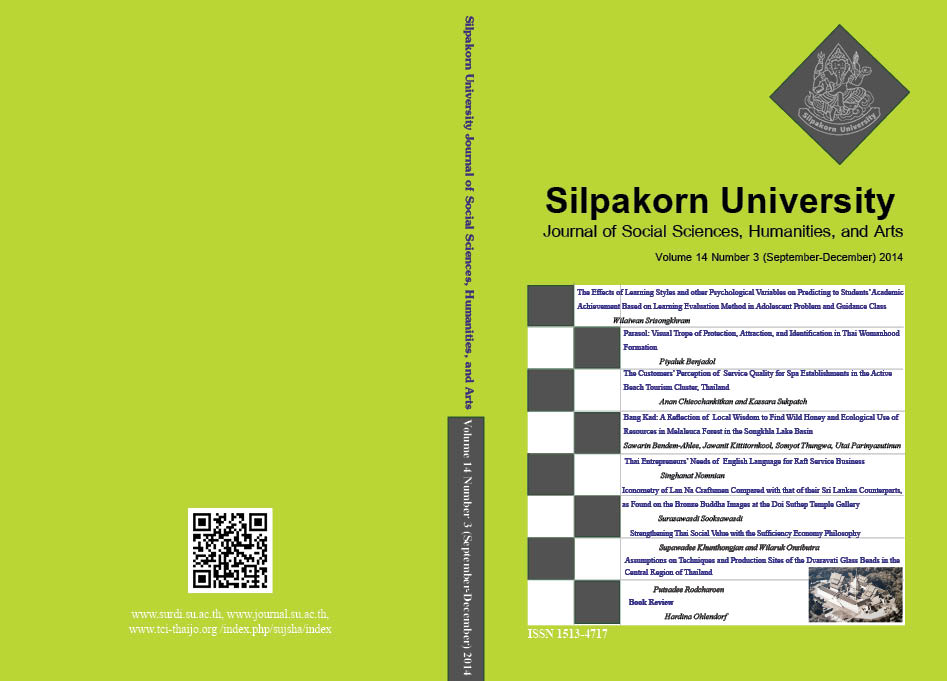Assumptions on Techniques and Production Sites of the Dvaravati Glass Beads in the Central Region of Thailand
Main Article Content
Abstract
This article details the study of glass beads, which were found in 8 archaeological sites in the central region of Thailand. 11 total shapes were identified: 1) Annular 2) Cylinder Disk 3) Oblate 4) Spherical 5) Barrel 6) Cylinder 7) Tube 8) Square Cylinder 9) Collared 10) Faceted Hexagonal Sphere and 11) Fluted. Three manufacturing techniques were used to produce the beads, including drawn beads, wound beads, and beads made from multiple techniques. The most commonly found manufacturing method were drawn beads. Based on a study of the bead shapes, manufacturing techniques, chemical analysis and comparison with other beads, it is argued that the glass beads from the 8 archaeological sites were imported from India, Sri Lanka, South East Asia and the Middle East.
Downloads
Article Details
All rights reserved. Apart from citations for the purposes of research, private study, or criticism and review,no part of this publication may be reproduced, stored or transmitted in any other form without prior written permission by the publisher.
References
Dubin, Lois Sherr. (1987) The history of beads from 30,000 B.C. to the present. New York: Harry N. Abrams, 1987.
Dung, Nguyen Kim, Ian Glover and Mariko Yamagata. (2006) Excavation at TraKieu, and Go Cam, QuangNam Province, Central Viet Nam. In Uncovering Southeast Asia’s Past, pp.216-231. NUS Press,Singapore.
Dussubieux, Laure and Barnard Gratuze. (2010) Glass in Southeast Asia. In 50 years of archaeology in Southeast Asia: Essays in honour of Ian Glover, pp.247-259. River Books, Bangkok.
Dussubieux, Laure, Bernard Gratuze, and Maryse Blet-Lemarquand. (2010) “Mineral Soda Alumina Glass: Occurrence and Meaning.” Journal of Archaeological Science 37:1646-1655.
Francis, Peter Jr. (2002) Asia’s Maritime Bead Trade 300 B.C. to the Present. Honolulu: University of Hawai’i Press.
Lankton, James, and Laure Dussubieux. (2013) “Early Glass in Southeast Asia.” Pp. 415-457 in Modern Methods for Analysing Archaeological and Historic Glass, edited by Koen Janssens. West Sussex: Wiley and Sons.
Qingxin, Li. (2009) Maritime Silk Road. Translated by William W. Wang. China: China Intercontinental Press. 2009.
Sode, Torben. (2003) Viking Age glass beads from Ribe, Denmark in the light of ethnographic research. In Ornaments from The Past: Bead Studies after Beck, pp.47-58. The Brad Study Trust, London.
Stark, Miriam T. (2000) Pre-Angkor Earthenware Ceramics from Cambodia’s Mekong Delta. UDAYA 1: 69-89.
Thaw, Aung. (1968) Report on the Excavations at Beikthano. Rangoon : Ministry of Union Culture.


